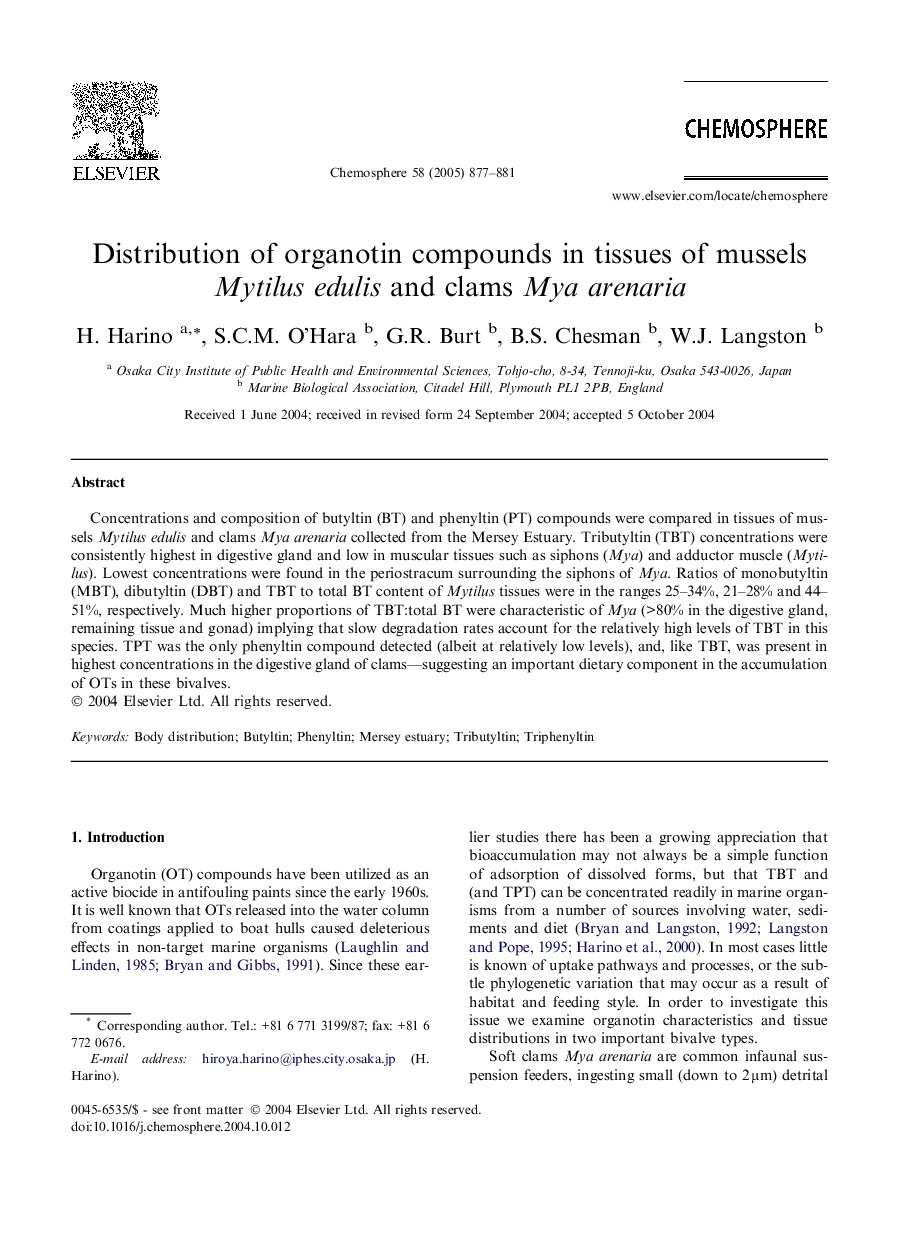| Article ID | Journal | Published Year | Pages | File Type |
|---|---|---|---|---|
| 9451853 | Chemosphere | 2005 | 5 Pages |
Abstract
Concentrations and composition of butyltin (BT) and phenyltin (PT) compounds were compared in tissues of mussels Mytilus edulis and clams Mya arenaria collected from the Mersey Estuary. Tributyltin (TBT) concentrations were consistently highest in digestive gland and low in muscular tissues such as siphons (Mya) and adductor muscle (Mytilus). Lowest concentrations were found in the periostracum surrounding the siphons of Mya. Ratios of monobutyltin (MBT), dibutyltin (DBT) and TBT to total BT content of Mytilus tissues were in the ranges 25-34%, 21-28% and 44-51%, respectively. Much higher proportions of TBT:total BT were characteristic of Mya (>80% in the digestive gland, remaining tissue and gonad) implying that slow degradation rates account for the relatively high levels of TBT in this species. TPT was the only phenyltin compound detected (albeit at relatively low levels), and, like TBT, was present in highest concentrations in the digestive gland of clams-suggesting an important dietary component in the accumulation of OTs in these bivalves.
Related Topics
Life Sciences
Environmental Science
Environmental Chemistry
Authors
H. Harino, S.C.M. O'Hara, G.R. Burt, B.S. Chesman, W.J. Langston,
